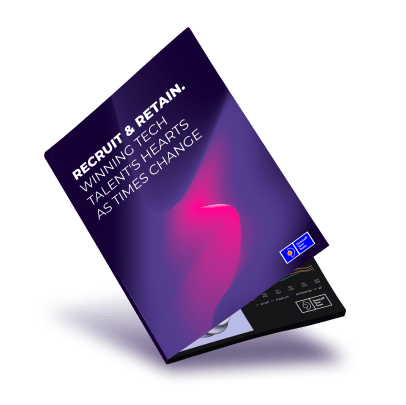Finding the right person to fit your team may seem an intimidating task, as it requires a lot of work, and hiring the wrong person may turn out to be a costly mistake. As the tech market grows, the future of recruitment promises us not only an accelerating workflow, but also requires a thorough verifying of the hiring decisions. Thus, a pre-employment background check becomes a vital procedure to confirm a candidate can actually become a valuable member of a team. This process is as important for remote workers as for those we can meet in person. It lets a business not only confirm the relevance of basic information that a candidate provides, but determine potential red flags and create a full impression on an applicant’s experience and qualities. At Outstaff Your Team, background screening is a standard procedure we perform while providing tech recruitment services, and today we offer practical guidelines on how to check employee background.
Establish Background Check Policy
First thing we need is to create a consistent background check policy that will be applied across all company. We need to decide whether we are going to perform a pre-employment screening ourselves or delegate it to a specialized company and what objectives we shall look at (education certificates, criminal records, sanction list checks, etc.). We should also keep in mind that a procedure should be compliant with applicable laws, as personal data is involved. To come up with a proper policy, it would also be a good decision to get legal advice on how to do an employment background check first.
Before we start a screening process, we need to get a candidate’s permission (a written one, if required by government regulations) and inform them that the results may influence the employment decision. If a candidate rejects a background check, we have a legitimate right to inform them that without such a check workers cannot be permitted to fulfill their duties, and not to proceed with such a candidate.
What Does a Background Check for Employment Consist of?

Background screening procedure can cover a bunch of areas, such as:
- Identity
- Education
- Employment history
- Social media activity
- Criminal history
- Drug screening
In different countries, laws concerning information that can be checked, may vary. Before starting a screening process, we need to be familiar with relevant legislative regulations. Also, if some aspects are not regulated directly, it is important to keep your background check for employees ethical. At Outstaff Your Team, we do not use age, gender, race, religion, orientation, or family status as reasons to reject a candidate or evaluation criteria.
Background Check for Employee: Procedure
Verify the Documents
The first and obvious point of background screening is verification of an identity, educational degree, criminal clearance, etc. The security in tech recruitment is crucial, so we need to make sure we hire specialists with a proven qualification and clear history. You can delegate it to a specialized company or do it yourself, with the help of background check tools. The easiest way to verify the information would be to ask a candidate to provide all the necessary documents that verify their information.
Contact References
Asking a candidate for two or three references is a great practice for an employment background verification. The best option would be to contact the candidate’s current direct manager, as they usually have an unbiased opinion and a clear understanding of a person’s input. While making a phone call with a candidate’s reference, confirming information listed in a resume would be a good place to start. It’s also good practice to ask about the candidate’s main accomplishments, their strong and weak points, the way they handle challenges, and general attitude to work. It may be a wise decision to omit personal questions about the candidate or their character description during a background check for an employer. It may prevent us from forming our own unbiased opinion.
Social Media Screening
An overview of a candidate's social media pages is a useful part of a background check process and can give a bunch of insights on their personality, background, and interests. Retention in tech is a hard process, and to make sure we hire specialists who can stay with us for long, we try our best to choose people whose values match ours. On the other hand, we do not want our screening process to be an intrusion in one’s personal life. Asking candidates to include social media links into their resume would be a fine option, as this way they can share as much as they are comfortable to. A lot of people post about their views, personality, values, and goals openly, giving us a picture of how they would fit into a company. Also, if we notice any warning signs, such as illegal activity, violent behavior or discriminatory comments, it can influence a rejection decision, as a candidate clearly doesn’t match our culture and values.
Potential Red Flags: What Do We Look For?
Discovering a red flag during a background check may not mean an automatic rejection of a candidate. It is always a good idea to give a candidate a chance to explain some brow-raising moments and clear up possible mistakes.

Warning Signs during a Background Check for Employer
- Any information that does not correspond to a candidate’s resume
- Negative comments from a former manager or colleague
- Lack of proof on education
- Multiple gaps in employment or job hopping
- Inappropriate content on social media
- Evidence of previous criminal history
Any of these issues that come up during a screening process are definitely worth a further discussion with a candidate.
Final Thoughts on a Background Check for Employment
Today, we tried to take a detailed look at what a background check for employment is. It is a crucial process for making the best hiring decisions that will help a company reach its business goals. An employer is the one responsible for making sure all candidates, who get a final offer, would make a valuable addition to the team. But if you don’t feel like wasting time on a thorough check of each applicant, you may consider IT staff augmentation services, to get access to a pool of talented tech specialists, who can match each and every requirement.
FAQ
-
What questions should a background check cover?
If you are conducting a candidate’s background check for employment, you may start with confirming information stated in the resume, including the candidate’s education, previous employment, etc. It is also extremely useful to ask a candidate for at least two references from previous employers, to confirm their experience.
-
What can an interviewer ask about a candidate’s background?
Interviewers need to know more about a candidate’s previous employment experience and understand more about their duties, role on a team during a previous employment, and the results a specialist was able to achieve. The interviewer can also ask about the strengths a specialist gained from their previous experience and the relationship they built within a team. Also, a typical question would be why did a specialist decide to move on and choose another opportunity.
Stay in tune
Curated Tech HR buzz delivered to your inbox



